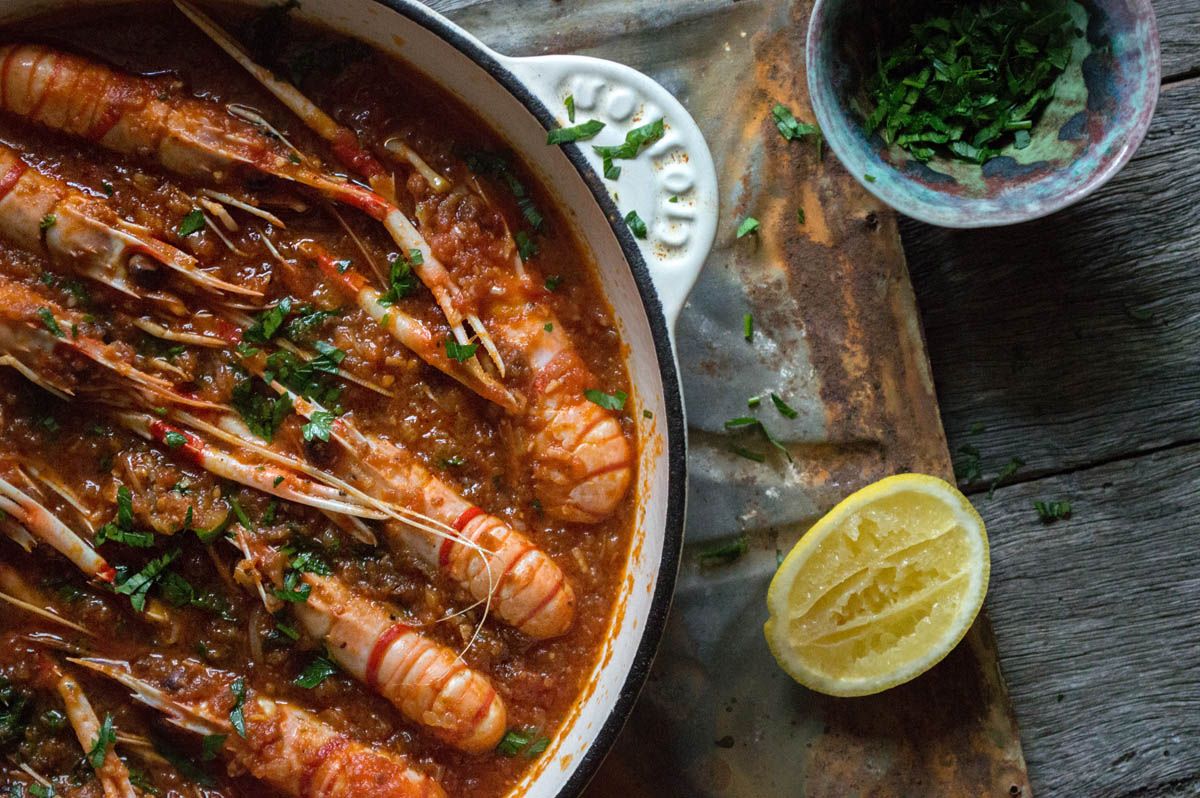Are you ready for another installment of our Flavours of the Adriatic? Judging by the popularity of this series, it seems through everything in life, a good, nay – great dish can unite us all. This week we bring you “buzara”.
So far in this series we have brought you some of our favourite dishes, like Vis Pie, crni rižot, žrnovski makaruni, sardines (because they are a dish in themselves) and our last article was about “brodet”; this week we are talking “buzara” and before you say it – yes, it is similar to “brodet” but not quite the same.
When I published the “brodet” article, someone commented that they prefer their brodet simpler – garlic, parsley and white wine... I love it like this too, but it is an entirely different dish altogether, she had described - ‘white buzara’.
Along the Croatian coast you will find buzara on most every menu but be aware, the dishes differ slightly. As I said above, a white buzara is made with garlic, olive oil/butter, white wine and parsley and this is classically done with mussels – “mussels na buzaru”.
A “red buzara” is very similar to a brodet and is typically made with scampi or shrimps “skampi na buzaru”; it still uses the same ingredients – except a little tomato paste and whole-peeled tomatoes are used and you can trade the white wine for red wine.

Credit: Heneedsfood.com
So, what is the difference between a brodet and a red buzara then? Very minute indeed, as I spoke about in regards to brodet, it is like a fish stew, 3 types of fish are used plus any other local ingredients – shells, eel, cuttlefish, octopus… whereas a red buzara generally focuses on one element, be it scampi, mussels, crayfish or other shells. The other notable difference (if we want to be specific) is that red buzara doesn’t use any onions, only fresh minced garlic.
Again, like many of Croatia’s dishes, you can find variances all around the Mediterranean; in Venice, one of their signature dishes is “spaghetti alla busara”, which takes its origins from Dalmatia and Istria. Crayfish used to come fresh to Venice every day from the nearby Rijeka. Stumbling upon various articles I came upon this quote:
“Rijeka, the Hungarian city, I must confess it was favoured by God because, besides to be in an exceptional location, favourable for the trade, its sea is full of the best fish, which are used to satisfy human gluttony. What other fish can we compare to crayfish? One day I heard a stranger say: ‘God bless Rijeka, its women, its crayfish!’ However, according to my taste, I’ll say: “God bless Rijeka for its crayfish and then its women.”
Apparently written by Antonio Papadopoli, comedian and Venetian Gastronome and author of Experimental Gastronomy 1866; how much truth there is to the statement, I cannot say but I like the sentiment.
So, which buzara to go for? My recommendation, is if you are after something a little lighter, opt for the “mussels na buzaru”, pluck the sweet mussels from their shells and dip in the gorgeous white wine sauce and be sure to have a piece of bread on-hand to mop up the remaining sauce.
“Skampi na buzara” is slightly heartier as it is often served with pasta or polenta and it is a hell of a lot messier – but that is half the fun!
I tried finding a video recipe and while there are probably better videos out there, I couldn’t get past this one for the pure fact of how simple and old school it is (like all good things in life); I particularly love the domače (domestic) wine on the table in the plastic Cola bottle. Enjoy!
Source info for story about Anontio Papadopoli: Cantinadospade and la cucina Italiana


